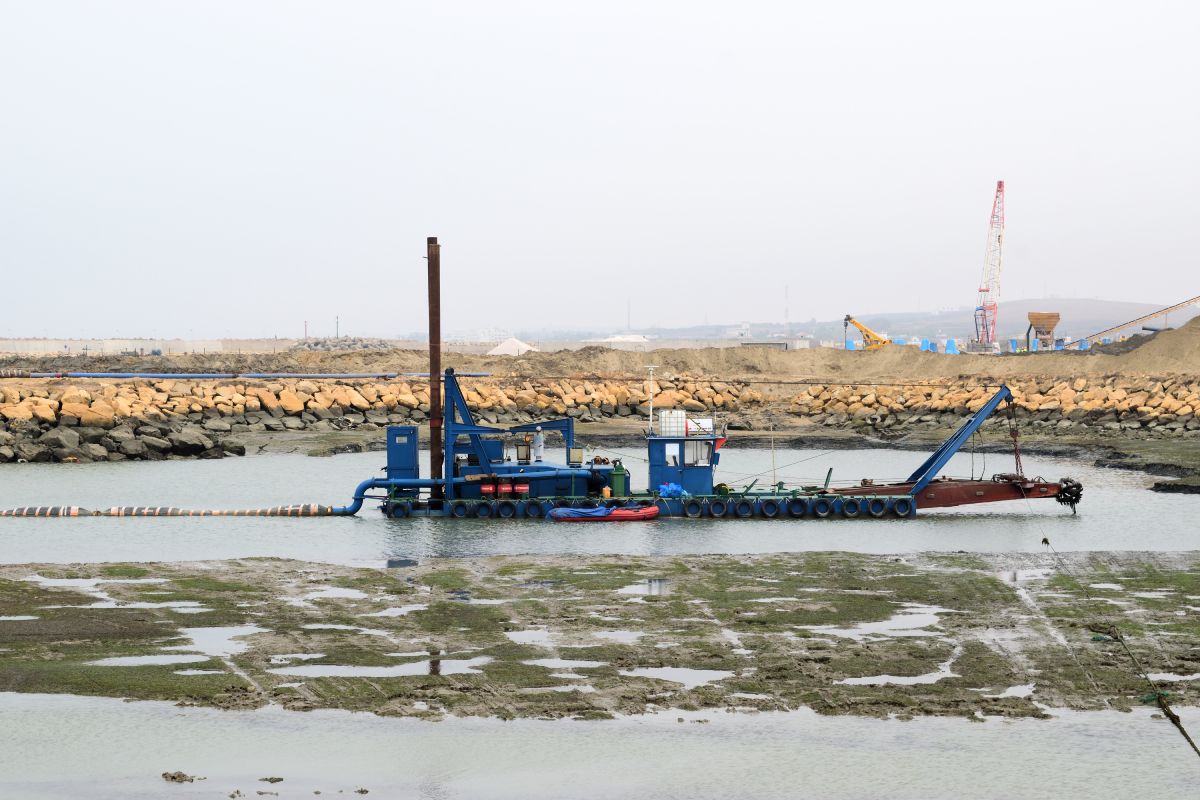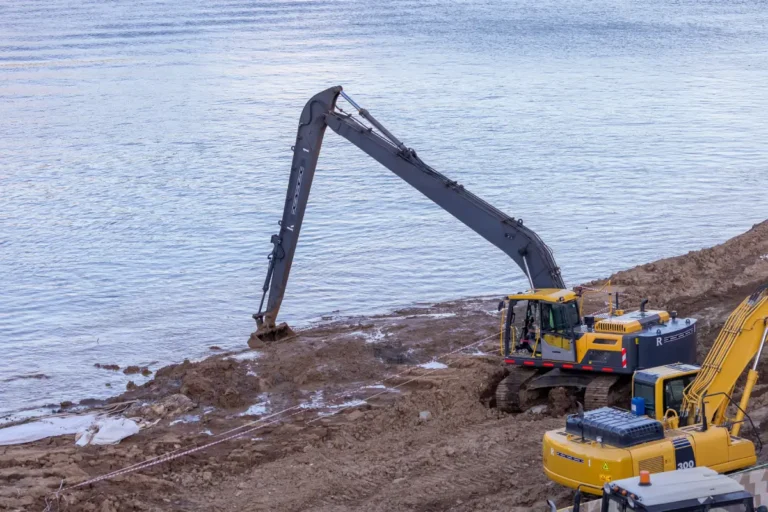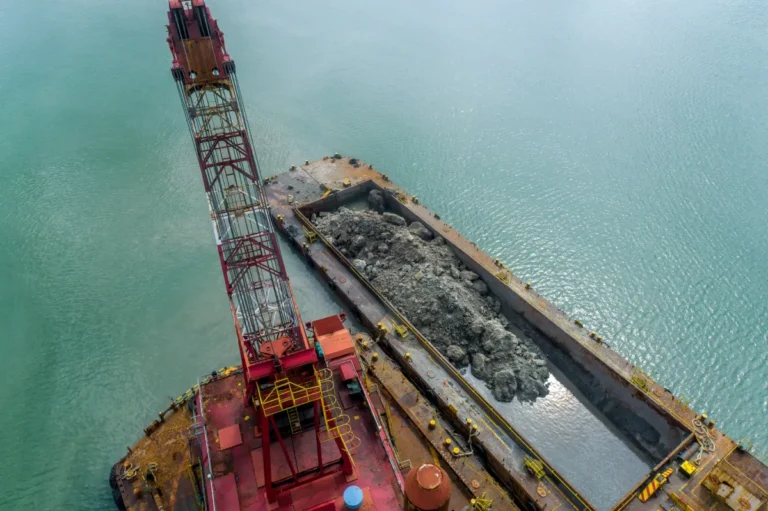Sedimentation is one of the most persistent threats to the performance and longevity of reservoirs worldwide. As silt and debris accumulate, they reduce storage capacity, limit water supply reliability, and impair flood control and hydropower functions. Addressing these issues through reservoir dredging is a complex and challenging task. Unlike lagoon dredging, which involves smaller, more contained projects, large-scale water reservoir dredging requires advanced engineering, extensive logistics, and careful environmental management. Understanding the unique challenges and solutions involved is essential for ensuring that critical water infrastructure continues to operate efficiently and sustainably.
Scale and Engineering Realities
Large-scale reservoir dredging introduces challenges that are fundamentally different from those encountered in smaller water bodies. The size of a reservoir not only multiplies the complexity of mobilization and reach but also increases the volume of sediment that must be managed. Unlike lagoon dredging, where operations are contained and sediment volumes are relatively predictable, water reservoir dredging often requires handling millions of cubic meters of material across vast areas. This scale demands specialized planning, equipment, and extended project timelines.
Another core issue is that technologies effective in small-scale systems cannot simply be scaled up. For example, dredging equipment designed for lagoons or ponds lacks the pumping capacity, solids-handling ability, and discharge distance required for large reservoirs. The linear scaling of machinery quickly becomes impractical when faced with deep water, long pipeline runs, and continuous operational demands.
The engineering problem is compounded by the need to maintain reservoir functionality during dredging. Irrigation supply, hydropower production, and flood control requirements often continue in parallel with sediment removal, forcing contractors to design methods that balance production efficiency with operational continuity. As a result, water reservoir dredging is less about the performance of a single piece of equipment and more about integrated systems capable of sustained, large-volume sediment removal under live operational conditions.
Site Access and Mobilization Constraints
One of the most significant challenges in reservoir dredging is simply getting the equipment to the site and operational. Unlike lagoon dredging, which often occurs in accessible, shallow areas with nearby infrastructure, many reservoirs are located in remote or difficult-to-reach regions. Transporting large dredging equipment, pipeline segments, booster stations, and support machinery requires extensive logistical planning. Access roads may be limited, staging areas may be inadequate, and in some cases, equipment must be modularized and assembled on-site to facilitate deployment.
Seasonal variations in water levels add another layer of complexity to water reservoir dredging. During high-water periods, shoreline access is reduced, while low-water periods can expose areas suitable for equipment assembly but restrict navigability. These fluctuations dictate when and how dredging platforms, barges, or amphibious systems can be mobilized. Contractors often rely on floating, modular dredge platforms that can be transported in sections and reassembled on the reservoir to overcome these challenges.
Additionally, long-term mobilization planning must consider crew accommodations, fuel supply chains, and spare parts delivery in remote areas. The ability to stage and sustain operations at scale is just as critical as the dredging equipment itself. Without addressing access and mobilization constraints, even the most advanced dredging systems cannot perform effectively in large reservoirs.
Sediment Characteristics and Pumping Challenges
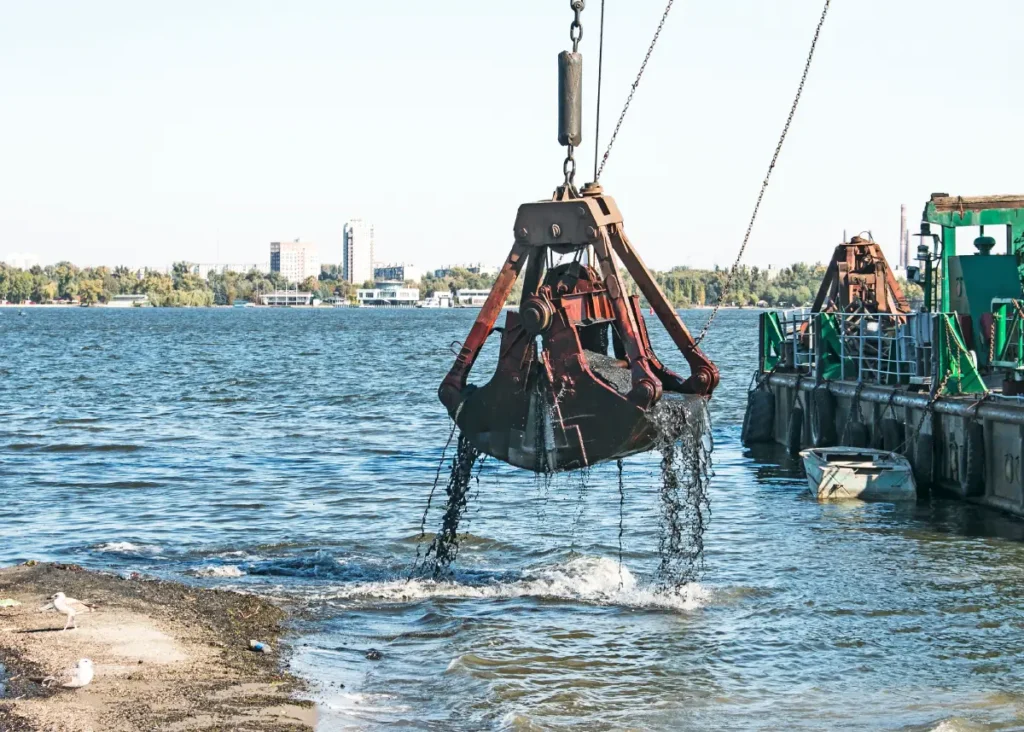
In large-scale reservoir dredging, the nature of the sediment is rarely uniform. A single project may involve fine silt, consolidated clay, organic debris, and coarse materials such as gravel or rock. Each sediment type introduces its own challenges for dredging equipment and pumping systems. Fine particles can cause pipeline clogging and require careful slurry management, while abrasive sands and gravels accelerate wear on pump impellers, liners, and discharge pipelines. By contrast, dense clay layers demand higher cutting and suction power to break apart and transport efficiently.
Compared to lagoon dredging, where sediment profiles are often more predictable, water reservoir dredging requires equipment capable of handling diverse and unpredictable conditions. Pumps must be designed with high solids-handling capacity and wear-resistant materials to ensure continuous operation in harsh environments. Additionally, long-distance pumping is often necessary in reservoirs, where sediment must be transported several kilometers to reach disposal or containment areas. This often requires the use of multiple booster stations to maintain slurry velocity and prevent line blockages.
Another critical factor is balancing pump performance with fuel efficiency and maintenance demands. Reservoir dredging projects often span extended periods, making durability and energy optimization crucial to operational success. Without the right pumping systems and sediment-handling strategies, production rates decline significantly, resulting in cost overruns and project delays.
Environmental Compliance and Ecological Safeguards
Environmental considerations are central to every reservoir dredging project. Unlike small-scale or lagoon dredging, where environmental impact zones are limited, large reservoirs are often critical habitats that support fisheries, wildlife, and downstream communities. Sediment removal operations can disrupt aquatic ecosystems, increase turbidity, and release nutrients or contaminants that have been trapped in the reservoir bed. These effects make regulatory compliance one of the most closely monitored aspects of water reservoir dredging.
Most jurisdictions require strict adherence to turbidity limits, water quality standards for discharge, and protection measures for aquatic life. The challenge lies in striking a balance between dredging productivity and environmental safeguards. For example, increasing production rates may speed up sediment removal but can also generate turbidity plumes that exceed allowable thresholds. Similarly, working in spawning or migration seasons may require partial or complete operational restrictions.
Modern dredging operations rely on real-time monitoring technologies to address these challenges. Turbidity sensors, water quality probes, and automated reporting systems help contractors demonstrate compliance while maintaining efficiency. In some cases, silt curtains and containment barriers are deployed to control the spread of sediment. Ultimately, successful water reservoir dredging requires a proactive approach that integrates environmental safeguards into the project plan, ensuring that dredging goals are achieved without compromising ecological stability.
Operational Constraints Imposed by Water Use
Unlike lagoon dredging, where operations can often be isolated from ongoing water demand, reservoir dredging must be carefully coordinated with the water body’s active functions. Reservoirs are rarely idle; they supply drinking water, provide irrigation, generate hydropower, and maintain flood control capacity. This means dredging activities cannot disrupt the operational reliability of the reservoir.
For example, water drawdowns for dredging may conflict with irrigation schedules or energy production targets. Hydroelectric reservoirs require steady water levels for turbine operation, while flood control reservoirs must maintain capacity during rainy seasons. These overlapping demands dictate not only when dredging can occur but also the pace at which it proceeds. In many cases, contractors must work within restricted time windows, which can extend project durations and increase costs.
Coordinating with water authorities, energy providers, and municipal stakeholders is therefore a core component of water reservoir dredging. Careful planning ensures that sediment removal aligns with water release schedules and seasonal demand patterns. Without this alignment, dredging activities risk being suspended or scaled back, which would undermine project efficiency. Managing these operational constraints is less about equipment capability and more about integrating dredging into the broader water management strategy.
Logistics and Supply Chain Dependencies
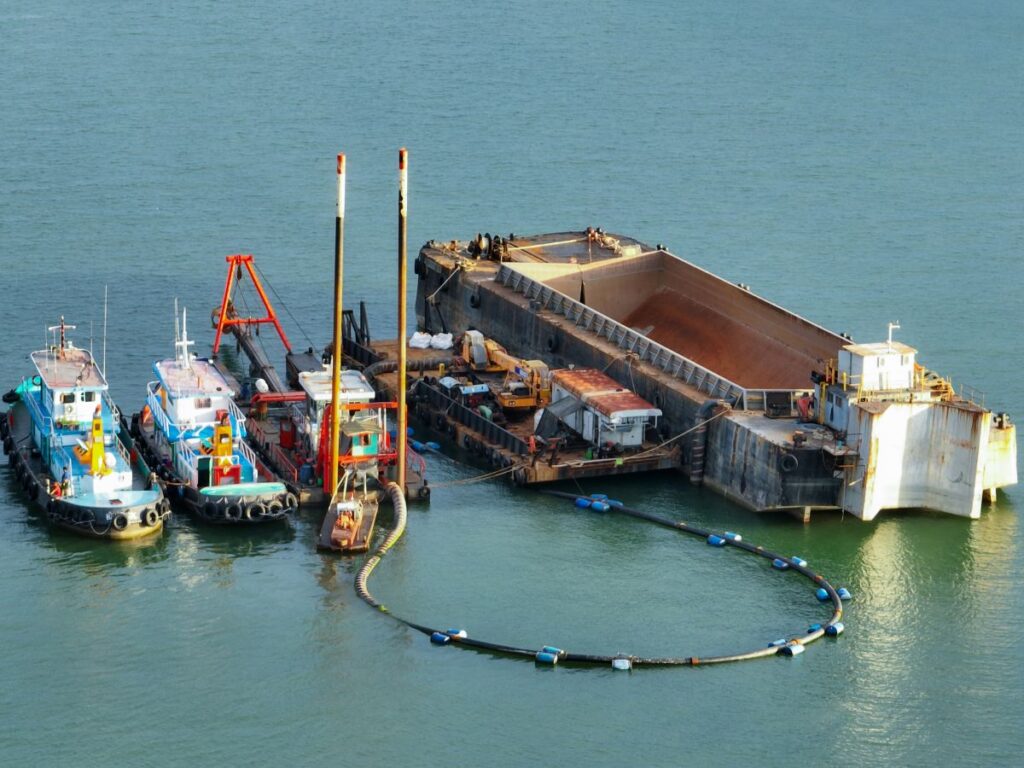
Large-scale reservoir dredging projects are as much about logistics as they are about sediment removal. The remoteness of many reservoirs creates significant supply chain challenges that are less pronounced in lagoon dredging or smaller-scale projects. Transporting heavy dredging equipment, discharge pipelines, booster stations, and support vessels often requires complex routing over narrow roads or rugged terrain. In some cases, equipment must be modularized and reassembled on-site, which adds both time and cost to the mobilization process.
Sustaining operations presents additional hurdles. Continuous dredging requires a steady supply of fuel, replacement parts, and consumables, all of which must be transported to the reservoir site. Downtime caused by supply delays can halt production entirely, making contingency planning critical. Crew logistics are another factor: housing, safety, and training must be addressed, particularly when teams are stationed at remote reservoirs for extended durations.
In long-duration water reservoir dredging projects, effective logistics management can be the difference between meeting production targets and falling behind schedule. Contractors often establish temporary support facilities near reservoirs to stage equipment and materials, reducing reliance on distant supply chains. The ability to anticipate logistical risks and secure reliable supply channels is therefore a defining element of successful large-scale dredging operations.
Economic Considerations and Cost Escalation
The financial dimension of reservoir dredging is often underestimated until a project is underway. Unlike lagoon dredging, which involves relatively manageable volumes and costs, large-scale water reservoir dredging entails millions of cubic meters of material, long discharge distances, and extended project timelines. These factors combine to make cost escalation a persistent risk if not addressed in the planning phase.
Key cost drivers include fuel consumption for pumps and booster stations, wear and tear on equipment from abrasive sediments, and the logistics of transporting dredged material to disposal or reuse sites. Pipeline length alone can significantly impact project economics; every additional kilometer requires more power, higher maintenance, and potentially additional booster stations. Labor and housing for crews at remote sites further add to expenses.
Another critical issue is deferred maintenance. Many reservoirs remain undredged for decades, allowing sedimentation to accumulate until capacity losses threaten the water supply or compromise flood control. When dredging is finally undertaken, the sheer volume of material makes the project exponentially more expensive. Proactive maintenance dredging, even at smaller scales, is generally more cost-effective than large, reactive interventions.
Ultimately, successful water reservoir dredging requires striking a balance between immediate capital expenditure and long-term operational benefits. Careful cost modeling, efficient resource allocation, and the adoption of modern technology are essential to keeping large-scale projects financially viable.
Technology-Enabled Solutions

Modern technology has transformed the way reservoir dredging projects are executed, helping contractors overcome challenges of scale, precision, and efficiency. In contrast to lagoon dredging, which can often be managed with conventional equipment, water reservoir dredging increasingly relies on advanced systems to maintain production rates while minimizing risks.
Remote-operated dredging vehicles (ROVs) and submersible dredge pumps allow work in deep or hazardous zones without exposing crews to unnecessary danger. These systems are particularly valuable in reservoirs where depth or underwater obstructions make conventional dredges impractical. GPS and RTK positioning, combined with sonar mapping, provide real-time data on sediment profiles, enabling precise dredging that avoids over- or under-excavation.
Automation has also become a force multiplier. Monitoring systems track turbidity, slurry velocity, and pump performance in real time, allowing operators to adjust parameters instantly to maintain compliance and optimize output. In long-distance pumping scenarios, automated booster stations reduce the risk of blockages and downtime.
While technology does not eliminate the need for experienced crews, it enhances decision-making, reduces inefficiencies, and extends the life of equipment. For large-scale water reservoir dredging, these solutions are not optional add-ons but essential tools that enable projects to meet both environmental and economic goals.
Sediment Management and Reuse Pathways
Disposal of dredged material is one of the most pressing challenges in reservoir dredging. The sheer volume of sediment generated from large-scale projects often exceeds the capacity of conventional disposal sites. Unlike lagoon dredging, where sediment volumes are smaller and easier to handle, water reservoir dredging can produce millions of cubic meters of material, making storage, transport, and long-term management critical cost and planning factors.
An increasingly important solution is to view dredged sediment not only as waste but as a potential resource. Depending on its composition, material removed during water reservoir dredging can be reused in agriculture as soil conditioning material, in construction as fill or aggregate, or in land reclamation projects. However, sediment quality varies significantly, with some reservoirs containing contaminants that restrict reuse options and require careful testing before deployment.
Regulatory compliance plays a crucial role in the reuse of sediment. Authorities typically require thorough chemical and geotechnical analysis to ensure the material is safe for secondary applications. Where reuse is not possible, secure containment areas must be designed, often involving engineered landfills or confined disposal facilities.
By integrating sediment management strategies into project planning, contractors can reduce disposal costs, improve environmental outcomes, and align dredging projects with broader sustainability objectives. The shift from disposal to reuse is gradually reshaping how large-scale reservoir dredging projects are approached worldwide.
Toward Integrated Reservoir Dredging Strategies
Large-scale reservoir dredging is a complex undertaking that intersects engineering, environmental compliance, logistics, and long-term water management strategy. From mobilizing specialized equipment in remote areas to implementing technology-driven monitoring systems, every phase of a project must be carefully integrated to achieve results at scale. Proactive planning, sustainable sediment management, and the adoption of modern dredging technologies are key to maintaining reservoir capacity and functionality well into the future. For organizations seeking expertise in water reservoir dredging or lagoon dredging, partnering with experienced professionals is vital. Learn more about tailored solutions and proven capabilities by visiting WA Dredge Contractors.


